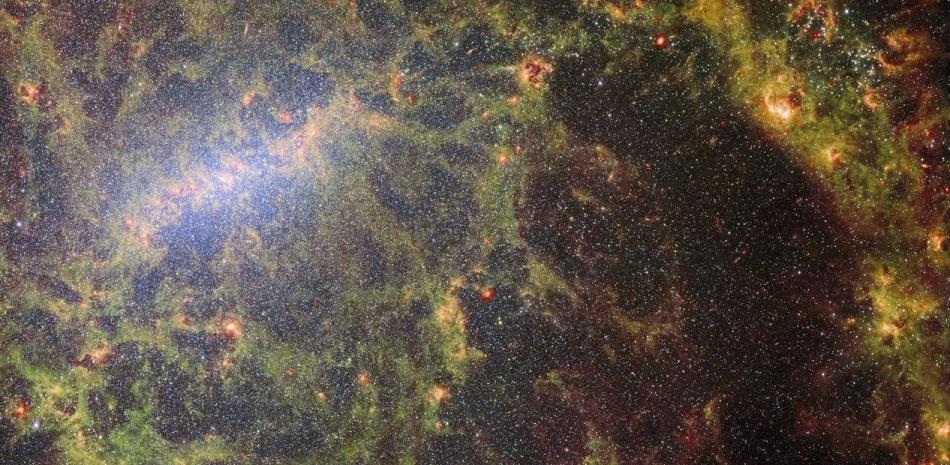Santa Cruz of Tenerife. Researcher at the Instituto de Astrofísica de Canarias (IAC) Susana Iglesias-Groth confirms that the development of life in the planetary systems of the Milky Way is much more likely than previously thought. you think
Iglesias-Groth comments that if looking at the universe teaches anything, it’s that it’s modest, and questions why it’s impossible for similar life to exist or exist in a galaxy that’s “massive,” even if it’s possible for humans to do so. Because the periods of the universe are long, these other life forms do not agree temporally.
That life may die out, but it also has the potential to form, and this raises the need for an open mind, because who would have thought 40 years ago that our galaxy has so many extrasolar planets.
The reports come after the publication of research showing that the interstellar medium of the Perseus Cloud contains tryptophan, one of the amino acids essential for the existence of human life.
The human brain needs tryptophan, which is found in many foods and can be converted into serotonin, which regulates mood, but melatonin, which regulates sleep.
At the beginning of his research, the scientist focused on molecular and quantum physics and studied the properties of then little-known carbon molecules, fullerenes, discovered in the laboratory in 1985 by Harald Grotto, Robert Curl and Richard. Smalley, eleven years later, received the Nobel Prize in Chemistry.
Croteau, Curl, and Smalley attempted to reproduce the chemistry of red giant stars and found molecules with a third form of pure carbon (besides graphite and diamond).
Fullerenes are made up of six- and five-atom carbon rings that are also present in many molecules essential to life, such as some amino acids.
Iglesias-Groth began Fuller’s search in the Perseus Cloud, one of the closest star-forming regions to the Solar System, and with the Galileo telescope, at the Roque de los Muchachos Observatory in La Palma, and larger ones in Texas and Chile.
First he discovered simple molecules containing carbon rings such as naphthalene and anthracene. Naphthalene combines with water, ammonia, and ultraviolet radiation to form many of the amino acids necessary for life.
In his search for prebiotic molecules linked to the origin of life, in 2010 he discovered the presence of anthracene in the Perseus cloud, a hydrocarbon with three carbon rings that plays an important role in production along with naphthalene. Many organic molecules are present in the formation of the solar system. When he accessed data from NASA’s Spitzer Space Telescope, he discovered the presence of fullerenes in the Perseus cloud.
The Perseus cloud, two million years old, is a “baby” relative to the Milky Way, which is about 13,000 million years old, Iglesias-Groth recalls. This star-forming cloud is one of the closest.
The researcher continued his work in the search for prebiotic molecules in that region, and this year he published the discovery of tryptophan, which is essential for the formation of proteins and the development of human life.
Perseus has an “impressive molecular richness,” in the words of Iglesias-Groth, who says he obtained the results of the Perseus cloud by examining the other 34 star-forming regions of the Milky Way during the epidemic.
The researcher found evidence that amino acids are more abundant in space than previously thought, particularly widely dispersed in regions of star formation and planetary systems.
For this reason, he believes that in some other planetary system of the Milky Way there could be, could be, or should be life similar to what we know on Earth, or at least no different.

:format(jpeg)/cloudfront-us-east-1.images.arcpublishing.com/gfrmedia/KKT2NWXOLRBHPM4U37S43ZJBC4.jpg)



:quality(85)/cloudfront-us-east-1.images.arcpublishing.com/infobae/KTKFKR763RBZ5BDQZJ36S5QUHM.jpg)